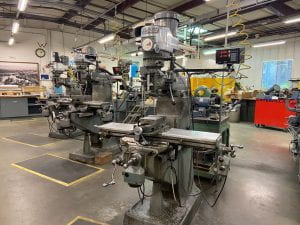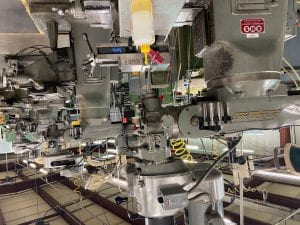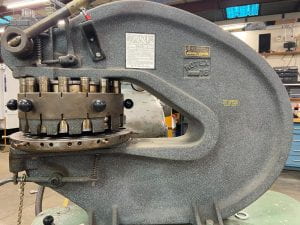The Technical Laboratories Leadership
UCSC Technical Laboratories Associate Director: Constance Rockosi – crockosi@ucolick.org
 Dr. Rockosi is a Professor of Astronomy and Astrophysics at UCSC. She has held many critical positions within UCSC including Chair of the A&A department. Dr. Rockosi is currently leading instrument efforts at UCSC, Calibration scientist for the DESI project, leading the detector development for the Keck Cosmic Reionization Mapper (KCRM), and the Low Resolution Imaging Spectrometer (LRIS), supporting the Keck Planet Finder (KPF) in final detector performance testing as well as overseeing lab operations and setting/verifying priorities.
Dr. Rockosi is a Professor of Astronomy and Astrophysics at UCSC. She has held many critical positions within UCSC including Chair of the A&A department. Dr. Rockosi is currently leading instrument efforts at UCSC, Calibration scientist for the DESI project, leading the detector development for the Keck Cosmic Reionization Mapper (KCRM), and the Low Resolution Imaging Spectrometer (LRIS), supporting the Keck Planet Finder (KPF) in final detector performance testing as well as overseeing lab operations and setting/verifying priorities.
UCSC Scientific Programming Group Manager: William Deich – will@ucolick.org
 Mr. Deich manages the S/W staff members in the development of software for new instruments, support of operational software for Lick Observatory, as well as maintaining and supporting the UCO IT infrastructure. Mr. Deich is also an individual contributor for controls engineer on internal and external UCO instrument projects supporting controls architecture development, planning and instrument integrated testing prior to and after instrument delivery as well as controls and S/W maintenance post delivery.
Mr. Deich manages the S/W staff members in the development of software for new instruments, support of operational software for Lick Observatory, as well as maintaining and supporting the UCO IT infrastructure. Mr. Deich is also an individual contributor for controls engineer on internal and external UCO instrument projects supporting controls architecture development, planning and instrument integrated testing prior to and after instrument delivery as well as controls and S/W maintenance post delivery.
UCSC Technical Laboratories Manager: Brian Peterson –brdpeter@ucolick.org

At UCO, Mr. Peterson directs the Mechanical and Electrical Engineering teams as well as the machine shop and model-making staff. His work centers on guiding the design and delivery of research instrumentation projects, managing scope, schedules, and budgets while coordinating across multiple laboratory groups. He represents UCO in project reviews and collaborations with campus and external partners, supports the development of advanced astronomical instruments, and contributes to policies and processes that strengthen laboratory operations and teamwork.
The Technical Laboratories is a matrixed organization with engineering and technical disciplines working on a variety of projects reporting to PI and Faculty as needed. The staff are matrixed to a specific project according to priorities and project needs and can be redirected to different projects and effort as priorities change. Dr. Rockosi works with the Technical labs managers (Peterson, Deich) to review and adjust priorities as necessary, meeting weekly to discuss priorities, progress and status.
Technical Laboratories includes the following technical disciplines
- Mechanical Engineering Group
- Instrument Fabrication Group
- Electronics engineering Group
- Detector Laboratory
- Scientific Programming Group, managed by Mr. William Deich and includes the following technical disciplines
Lab Activities and personnel
The Technical labs are responsible for the design and fabrication of some of the best astronomical instruments on this (or as far as we know, any) planet. Instrumentation design and fabrication, integration and test, risk reduction prototyping, instrument warm and cold testing, initial verification testing and final validation testing on the telescope are all part of the technical labs efforts.
Current Instruments and collaborations in design and fabrication:
- Keck Cosmic Reionization Mapper (KCRM) (Detector system UCO PI: C. Rockosi)
- https://keckobservatory.org/the-keck-cosmic-reionization-mapper/
- Low Resolution Imaging Spectrometer (LRIS) Upgrade (Detector system UCO PI: C. Rockosi)
- https://www2.keck.hawaii.edu/inst/lris/lrishome.html
- Keck Planet Finder (KPF) (Detector system UCO PI: C. Rockosi)
- https://exoplanets.caltech.edu/kpf/
- Santa Cruz Array of Lenslets for Exoplanet Science (SCALES) PI: A. Skemer
- https://arxiv.org/abs/2012.09098
- Fiber Optic Broadband Optical Spectrometer (FOBOS), PI: K. Bundy
- Completed March 2021 AO system Wave Front sensor for Lick Observatory (WFS) PI: Don Gavel/Phil Hinz
Gerald Cabak Development Engineer – cabak@ucolick.org
Michael Gonzales Instrumentation Engineer – mgonz248@ucsc.edu
David Marques Lab Mechanician – marques@ucolick.org
Matthew Radovan Engineering Research & Dev Engineer –mradovan@ucsc.edu
Chris Ratliff Development Engineer – cratliff@ucolick.org
Cristian Rodriguez Mechanical Engineer – crodr115@ucsc.edu
Dale Sandford Detector Engineer – sandford@ucolick.org
Pavl Zachary Model Maker – pczachar@ucsc.edu
The engineering group includes mechanical, electrical and detector engineers working closely with the project Principal Investigators to produce designs, drawings, produce parts and integrate systems that push instruments to meet, and many times exceed, the initial system requirements. The combination of talents in this department takes the projects from the conceptual stage and forges those concepts into working drawings that are then passed on to the Fabrication Shop for fabrication. Integration, and verification testing is ideally performed in the specially equipped rooms that allow safe integration of state of the art detectors and components.
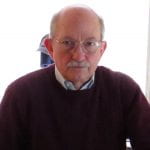
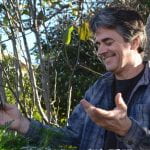

The current engineering staff include Chris Ratliff, Gerald Cabak, Dale Sandford (electronics and CCD specialist).
These UCO technical team engineers and technicians travel to both Mauna Kea and to Mt. Hamilton to support instrument integration and verification testing at both locations. The team is also called upon by both observatories to consult on and perform needed instrument repairs.
Once the instrument designs are fully detailed and during the full scale development phase part fabrication begins in the instrument lab. The highly skilled mechanicians are responsible for the quality high-precision machining, welding, assembly, and alignment of the World-class astronomical instruments produced here at the labs. The design engineers work closely with the mechanicians throughout the fabrication process and assembly. The current mechanicians include Pavl Zachary, Michael Gonzales and David Marques.
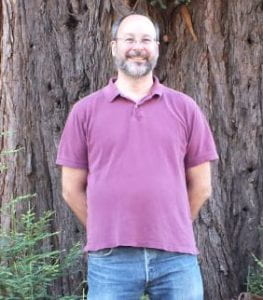
Dale Sandford, Electrical Engineering sandford@ucolick.org
The CCD lab provides testing and support for the optical and infrared detectors used by UC Observatories. Dale Sandford is the Associate Detector Engineer for the CCD Lab and the senior electronics engineer overseeing the technical work by the electronics engineers and technicians providing the hands on work. Mr. Sandford leads the detector test and integration efforts, working closely with Dr. Rockosi (Associate Director of TL) for all instruments in our queue including KCRM, LRIS, SCALES etc.
UCO also maintains a more general electronics lab where the work includes electronics design (CAD), preamp and cable fabrication, solder stations, cable and harness fabrication and test equipment. Michael Gonzales is a junior engineer working in the electronics lab supporting a wide variety of instruments in development and test. He is currently working on the integration and test of the motor control stages for KCRM and SCALES and will work closely with the PIs and the Scientific Programming Group (SPF) to full test these systems.
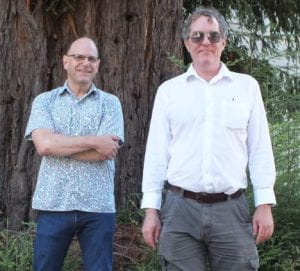
Will Deich, Sci. Programming Gp Leader – will@ucolick.org
Steve Allen, Programmer/Analyst – sla@ucolick.org
Aaron Hunter, Software Engineer – aamuhunt@ucsc.edu
Dusty Reichwein, Programmer/Analyst – jreichwe@ucsc.edu
The UCO/Lick Observatory SPG creates and maintains software in support of engineering and optical R&D, telescope and instrument operation, observing, and data reduction.
The team provides all levels of software support, ranging from chip-level DSP programming and embedded code for Galil motion controllers to high-level GUIs and image reduction tools for end users (astronomers).
Our team develops the software that makes world-class astronomy possible.
At Lick Observatory (Mt. Hamilton, California), we’ve created software to control most of the telescopes and instruments used by astronomers every night.
At Keck Observatory (Hawai‘i), we’ve built software for:
- Powerful instruments like the HIRES, ESI, and DEIMOS spectrographs
- Tools that improve clarity, such as the Atmospheric Dispersion Compensator (ADC)
- Upgrades to detectors that capture sharper images of the universe
- Specialized systems like the deployable tertiary mirror (K1DM3)
What we’re working on now:
- New upgrades to the LRIS instrument
- The Keck Cosmic Reionization Mapper (KCRM), designed to study the early universe
- The Keck Planet Finder (KPF), a state-of-the-art instrument for discovering new worlds
- SCALES, an advanced instrument to help scientists study exoplanets in greater detail
Keeping the Observatories Running Night After Night
- We provide software support for instruments at both Lick and Keck Observatories.
- Our team develops software to operate specialized equipment in UCO/Lick laboratories.
- We consult on the design of software for future astronomical instruments.
In addition, our group ensures smooth day-to-day operations by:
- Supporting remote observing for astronomers
- Maintaining the infrastructure at UC Santa Cruz that keeps observatory systems running reliably
Current Members
- Will Deich, Manager/Programmer/Analyst
- Steve Allen, Programmer/Analyst
- Aaron Hunter, Software Engineer
- Dusty Reichwein, Programmer/Analyst
- Hamilton Spectrograph – Control software for the Hamilton Spectrograph on the Shane telescope at Lick Observatory was first deployed in 1986/87, and fully refreshed in 2010 with a modern motion controller.
- Kast Double Spectrograph – Control software for the Kast Spectrograph on the Shane telescope was first deployed in 1992, with major upgrades in 2008.
- Anorad Profilometer – Measurement control and data reduction software for the profilometer used in the UCO/Lick Optical Laboratory. Initially used to fabricate the convex aspheric surface of the secondary mirrors for the Keck telescopes. Subsequently used during the fabrication of many other optical elements for instruments.
- LIRC-II – Control software for the second Long InfraRed Camera used on the Kuiper Airborne Observatory and at Lick Observatory on Mt. Hamilton.
- HIRES – Control software for the High Resolution Echelle Spectrograph installed on the Keck I telescope on Mauna Kea in 1994.
- AMOS – Control and observation planning software for the robotically-positioned fiber heads of the Automated Multi-Object Spectrograph at Lick Observatory on Mt. Hamilton.
- PFCam – Control software for the Prime Focus Camera installed on the Shane telescope at Lick Observatory on Mt. Hamilton.
- ESI – Control software for the Echellette Spectrograph and Imager installed on the Keck I telescope on Mauna kea in 1999.
- HIRES Exposure Meter – Control software for the HIRES Exposure Meter installed on the Keck I telescope on Mauna Kea in 1999.
- DEIMOS – Control software for the DEep Imaging Multi-Object Spectrograph installed on the Keck II telescope on Mauna Kea in 2002.
- Poco – Control software used for both the Shane and Nickel telescopes and domes.
- AO Upgrade – Control software to upgrade the Adaptive Optics system installed on the Shane telescope at Lick Observatory on Mt. Hamilton.
- HIRES Mosaic Upgrade – Control software for the new mosaic detector being installed into HIRES on the Keck I telescope on Mauna Kea during 2004.
- Keck1 ADC – Control software for the Keck 1 atmospheric dispersion compensator, built at UCO, installed and commissioned 2009.
- K1DM3 – Control software for the Keck 1 Deployable Tertiary, built at UCO, and installed and commissioned 2018.
- APF – All software for the semi-robotic Automated Planet Finder facility at Mt Hamilton, excluding the control software provided by the telescope and dome vendor.

